If you’re a fan of visiting the Disney parks, you’ve likely come across a website called TouringPlans.com, a one-stop-shop for all of your Disney vacation planning needs. You might have created a Touring Plan to help navigate your way around the parks, used their crowd calculator to determine the least busy days to visit the parks, or even found the perfect hotel room using their Walt Disney World Resort Guide.

Last month, we were able to connect with Len Testa, President of TouringPlans.com, and co-author of The Unofficial Guide to Walt Disney World, The Unofficial Guide to Disneyland, and The Unofficial Guide to British Theme Parks, to learn more about how TouringPlans got its start, how a Touring Plan “works,” and to learn more about this vital Disney vacation planning guide.
With the amount of information we took in during our conversation with Len, we’ve decided to break the interview up into multiple parts. A portion of the interview will be released on each Tuesday in August. Part one (today) will focus on Len’s background, and how the Touring Plans software got its start.
Part Two (August 14): The Science Behind TouringPlans
Part Three (August 21): TouringPlans.com Features
Part Four (August 28): Industry Trends
Part One: The Beginning of TouringPlans
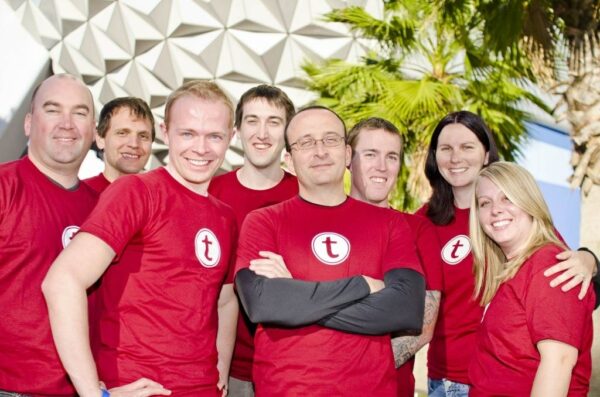
Len Testa (Grey Sleeves) and some of the TouringPlans Team. Photo: Wired.
Coaster101.com: For our readers who might not know, who is Len Testa?
Len Testa: I’m Len Testa. I’m a computer scientist by training. I’ve got undergraduate and graduate degrees in computer science from North Carolina A&T in Greensboro, North Carolina. I’ve always been fascinated with using computers to solve everyday problems for people. In my corporate life, prior to doing Touring Plans, that’s what I did.
I’m from Ohio originally. My parents moved to North Carolina when I was 18, and I finished my high school up there, got a job with American Express, which is a whole ‘nother thing. Amex hired me as a programmer when I was 19, without a degree. It was more casual back then in terms of recruiting. When I left in 2012, I was their director of technical architecture. So, I learned a lot, they put me through graduate school, it was a phenomenal experience.
Coaster101.com: What was it like attending North Carolina A&T?
Len Testa: The interesting thing about it is this, it’s a small school in the middle of North Carolina. I lucked into it for two reasons. First, one of my thesis advisers, Gerry Dozier, he’s like top-10 in the world in evolutionary algorithms, which is what I studied. Basically, its teaching a computer to mimic natural selection and evolution, which is the framework that the code is based on. He was at Auburn, but came back to Greensboro for family reasons, so started teaching at A&T. Jerry’s great, and could probably teach at any school in the United States, but for family reasons, he was in Greensboro, North Carolina when I was there, so that was great.
My other adviser was a guy named Albert Esterline, and I’m not making this up, he is literally the smartest person I’ve ever met, and I’ve met some smart people. He’s phenomenal. Any question I had on computer science, he knew, but he also taught me the underlying beauty of computer science. There were things I learned there that I find fascinating, and I had a wonderful experience, all because of Al. I liked computer science before I started my graduate degree, but I loved it when I was done, and that was from him. I could not have had better advisers.
Coaster101.com: What is your favorite Disney Attraction currently operating, and favorite Disney attraction that has closed?
Len Testa: My sentimental favorite is Splash Mountain, and I have some criteria around this. It’s got to be worth the wait – it can’t be a 45-minute wait for a 1-minute ride, it’s got to be epic in scope and scale, it’s got to have a good story, it’s got to have good thrills and a good soundtrack. Splash Mountain checks all of those boxes for me, whereas Space Mountain doesn’t. Big Thunder kind of does as well.
It’s not one specific attraction that I miss, but 1980’s Epcot is the greatest theme park ever built. I hate to be that guy who tells you things were better back in the day. Horizons was amazing. So optimistic and futuristic, no one had ever seen anything like it. I remember going into World Showcase for the first time, into France, and hearing people actually speak French in the shops, and I remember thinking “who the hell would have thought of that?” It was just genius. When I was writing my thesis, I played the 1991 official album on CD so many times to the point where I can’t listen to it today. I got burned out on it that much. Everyone has an album they love but can’t listen to anymore, and that was it for me. Half of that was Epcot, it was great.
Coaster101.com: How did TouringPlans get its’ start? Is it true that it started as your graduate thesis at A&T?
Len Testa: Here’s how TouringPlans started. When I started graduate school, I went on a family trip to Walt Disney World with my twin sister, and we waited in line for two hours for the Great Movie Ride. This was back in the day, when they weren’t keeping everyone inside in the queue, so we were waiting outside. It was uncovered. As I’m telling you this, I can feel the sun on my head just like it was happening then. I thought to myself, “there’s got to be a better way to do this” where computers can help schedule all of this. There’s got to be a way that computers can tell you how to see Disney World more efficiently.
I finished the trip, and I went back to my graduate school advisers, and I told them “I want to write a computer program that routes you around Disney World to avoid lines.” And they had – God bless them that they didn’t say no right away – they had two questions for me. The first question was “Is this a hard problem? Is it worthy of a Master’s thesis?” So, they sent me to the library, which was ironic because it was a web-based tool I wanted to build. As it turns out, minimizing your wait at Walt Disney World is an example of one of the fundamental problems in math and computer science – this thing called the “traveling salesman problem.” It’s an example of the time-dependent version of the traveling salesman problem.
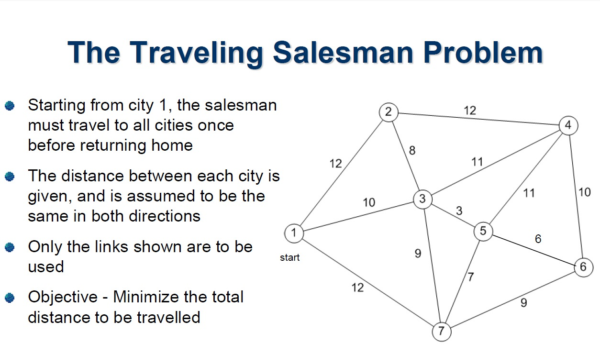
Lots of research had been done on it. Companies like UPS and FedEx or the US Postal Service are super interested in the exact same type of problem, because they’re trying to deliver packages as cheaply and efficiently as possible. If you consider yourself the package delivery person, you consider the rides and attractions the customers that you have to deliver to, and you consider the waits in line as the traffic between the customers, then you have the same problem. So, my advisers were fine with that, and it was a hard-enough problem. My master’s thesis actually expanded on the PhD dissertation of one of UPS’ lead research scientists.
The second question they had was “Does anyone other than you care about this problem?” [laughs] “Is this Len’s thesis, or is it something other people will be interested in?” Obviously, millions of people visit Walt Disney World annually. While I was doing my thesis, I contacted [Author of The Unofficial Guide to Walt Disney World] Bob Sehlinger, I mailed him a physical letter. I told him “I was working on this problem, and I know you’ve got these things called Touring Plans,” and at the time I needed data. Because even if I know how to make the decision, knowing what the waits are at different times of the day – I didn’t have that information. So, I contacted Bob, and he called me back, and didn’t think I was nuts, which was great! [Laughs]
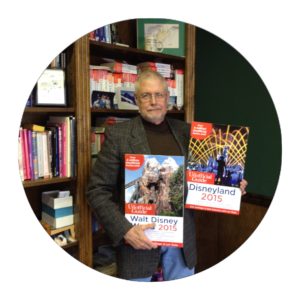
Bob was working with MIT at the time, and working with a guy named Dick Larson, who was basically “Mr. Queueing Theory.” If you ever have a queueing problem, Dick Larson is the guy to call, and he’s still there. They had written some software, I think it was mixed integer linear programming based in excel – a relatively straightforward model. It looked at it from the perspective of people running a theme park. If you’re Disney and you’re running a theme park, and you have to hit a wait time of 45 minutes on Splash Mountain, how many people do you have to have, how many “log” ride vehicles do you need to make sure are running on the ride, what’s the demand and so on? That was super complicated to me, and the way I was looking at it was the opposite – from the perspective of the consumer. When you’re walking through the theme park, the only piece of information you really have to make decisions on is the wait time. There are people who know about capacity and throughput, but the average tourist doesn’t. So, I said “What if we only have that one piece of information, isn’t that really a representation of every other decision that’s been made about the ride? Doesn’t the 45-minute wait at Splash Mountain really encapsulate the demand and the number of logs running, and the speed of the logs, isn’t it all that?” As it turns out, it was.
During my thesis, what I would do was rope my family into going to Walt Disney World – we were just doing the Magic Kingdom at the time – and what we would do is literally walk around the Magic Kingdom every 30 minutes and write down every one of the wait times that we saw. We actually had a pattern in the way that we did it. We split the park in half, left half, right half, right down Main Street, and if you were on the right-hand Side, you’d start at Stitch and Buzz, walking through Tomorrowland into Fantasyland, do half of Fantasyland and end at Dumbo (when Dumbo was located there), and then walk back through the castle to be able to start at Stitch again by the end of your 30-minute shift. If you did it right, it would take you exactly 20 minutes to get back to Stitch, and if you were really fast, you could hop a ride on the TTA (Tomorrowland Transit Authority), get one ride in, hop off and do it again.
We did that day after day after day, we all got blisters on our feet, and sunburns, but we would do this summers and anytime we had off so that we could have enough data to run the program. Once we finally got enough data, we plugged it all into Excel. If you could imagine an Excel sheet where every row is a different ride, and every column is a wait time in 15-minute increments from park open to park close. If we were there for a week in June, not only would we have the individual days, but we would average them out. We would fit that into the algorithm and the algorithm would spit out results.
I graduated in 2000. It took 3 years of data collection until my code beat what Bob had done with MIT. But the funny thing was, we were doing head-to-head trials with families who were readers of the Unofficial Guides who were writing in at the time. We had actual families to test it, and it was double-blind. We didn’t know which family had which plan, and the families didn’t know which plans they had. In walking around the park on the first day, I knew where the family who had my plan should be at any given minute. I knew that they were supposed to be at Liberty Belle River Boat around noon, and once I saw them there and they were on track, I knew there was no way they were going to lose to the current [Sehlinger’s] plan, because the rest of the attractions after that were shows and parades, pretty much fixed wait times, so unless something went tragically wrong on Tom Sawyer Island, there was no way I could lose.
I remember where I was standing when I knew the software was going to work. It was one of the most edifying days of my life. That was in 2003. For the 2003 Unofficial Guide, the software produced all of the Touring Plans for the Magic Kingdom and Epcot and the Studios. It took three more years, until Expedition Everest opened, for there to be enough to do at Animal Kingdom for the software to produce the better plan.
Thanks for reading! Come back next week as we discuss some of the science behind TouringPlans.com!
For more information about Len Testa and Touring Plans, be sure to visit TouringPlans.com. You can also follow Touring Plans on Social Media: Facebook | Twitter | Instagram, and Len Testa on Twitter at @LenTesta.

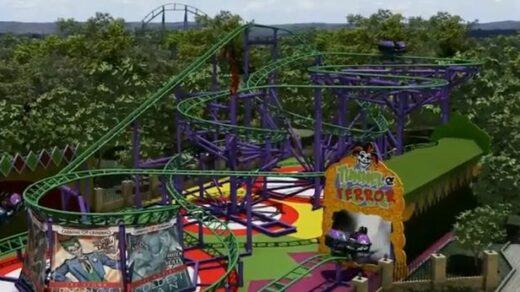
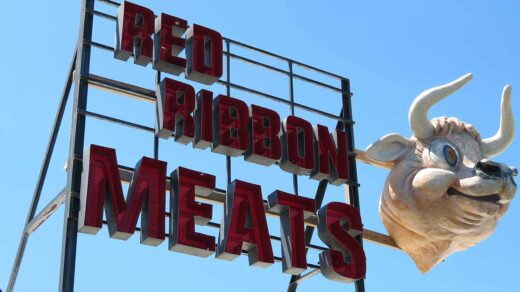





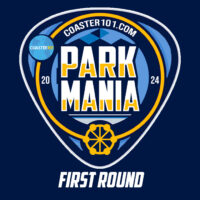




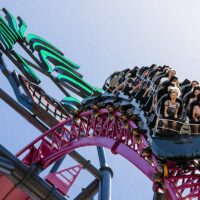
Recent Discussion